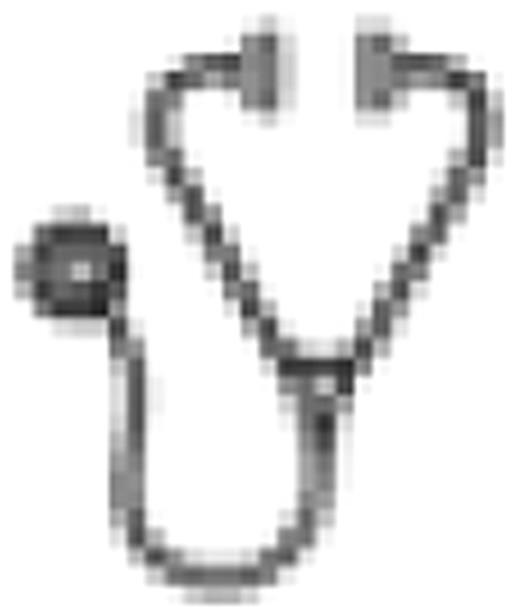Abstract
Abstract 101
We have recently reported that mutations in isocitrate dehydrogenase 1 (IDH1) and 2 (IDH2) genes are present in ~16% of younger adults [<60 years (yrs)] with acute myeloid leukemia (AML) and that they are associated with normal karyotype (NK) AML, in particular with the NPM1mutated/FLT3-ITDnegative genotype. Within this distinct genotype IDH mutations constitute an unfavorable prognostic factor in younger AML.(Paschka et al., J Clin Oncol. 2010;28:3636–43) Our former study in elderly AML patients (pts) suggested the NPM1mutated genotype, and in particular the NPM1mutated/FLT3-ITDnegative genotype, as a predictive factor for outcome after treatment with all-trans retinoic acid (ATRA) given as an adjunct to intensive chemotherapy.(Schlenk RF et al., Haematologica. 2009;94:54–60) To date, there is only scarce data on the frequency and clinical impact of IDH mutations in elderly AML pts, and no study has analyzed the prognostic relevance of these mutations in the context of additional treatment with ATRA.
The molecular analyses were performed on pre-treatment bone marrow (BM) or blood specimens from 732 pts with AML aged ≥60 yrs treated on one of two AMSLG trials [AML HD98B (n=306), AMLSG 06-04 (n=426)]. Mutational screening of exon 4 of both IDH1 and IDH2 was performed by a combination of denaturing high performance liquid chromatography and direct sequencing. Pts were also analyzed for the presence of FLT3-ITD, FLT3-TKD and NPM1 mutations. The treatment on each AMLSG trial incorporated a double induction and intensive consolidation therapy; in the AML HD98B trial pts were randomized for ATRA as adjunct to chemotherapy, whereas in the AMLSG 06-04 trial ATRA was given to all pts, and they were randomized for the administration of valproic acid.
A total of 163 IDH mutations were found in 732 (22%) pts. All but one IDH mutation clustered to the previously reported mutational hot spots: IDH1R132 (n=54), IDH2R140 (n=92), IDH2R172 (n=16); one case had both IDH1 and IDH2R172 mutation, and in one case a novel IDH2I170T mutation in addition to a IDH2R172 mutation was detected. IDH mutations were associated with higher platelet counts (P<.001), higher circulating blasts (P<.001), in trend higher BM blasts (P=.08), and were found more frequently in NK-AML (P=.007), AML with mutated NPM1 (P<.001), and AML with the genotype NPM1mutated/FLT3-ITDnegative (P<.001), whereas in complex karyotype IDH mutations were less frequent (P<.001). Among the NPM1 mutated cases the frequency of IDH2R140 mutations (n=40) was twice as high as of IDH1 mutations (n=21). Notably, no IDH2R172 mutation occurred together with a NPM1 mutation or FLT3-ITD. The median follow-up for survival of all pts was 3.56 yrs (95%-confidence interval, 3.24–4.01 yrs). Exploratory outcome analyses did not reveal any impact of IDH mutations on induction success or outcome [relapse-free survival (RFS); OS] in the entire AML cohort, as well as in NK-AML, and on subset analysis of NK-AML exhibiting the NPM1mutated/FLT3-ITDnegative genotype. However, in AML exhibiting the NPM1mutated genotype, pts with IDH1 mutations appeared to have an inferior OS than those with IDH2R140 mutations (P=.05; 3-yr OS rates, 12% vs 42%). In concordance with our previous results, we confirmed in an “as-treated” analysis the beneficial effect for ATRA on outcome in AML exhibiting the NPM1mutated/FLT3-ITDnegative genotype (OS; P=.026) and also the NPM1mutated genotype (OS; P=.0029). Further subset analyses of AML with the NPM1mutated genotype revealed an association of the IDH mutation type (IDH2R140vs IDH1R132vs IDH1/2 wildtype) and response to ATRA treatment. In pts harboring the IDH2R140 mutation OS appeared to be superior when treated with ATRA compared to no ATRA treatment (P=.10; 3-yr OS rates, 48% vs 25%). This beneficial effect of ATRA was also seen in pts with IDH1/2 wildtype (P=.0016; 3-yr OS rates, 30% vs 10%), but not in pts with IDH1 mutations (P=.46; 3-yr OS rates, 17% vs 13%).
The overall incidence of IDH mutations in elderly is higher than in younger AML pts. This is mainly attributed to the increased frequency of IDH2R140 mutations (10%) in elderly compared to younger AML pts (~6%). Treatment with ATRA as adjunct to intensive chemotherapy appears to be beneficial in NPM1 mutated NK-AML with IDH2R140 mutation or with IDH1/2 wildtype.
Greil:Cephalon: Research Funding.

This icon denotes an abstract that is clinically relevant.
Author notes
Asterisk with author names denotes non-ASH members.

